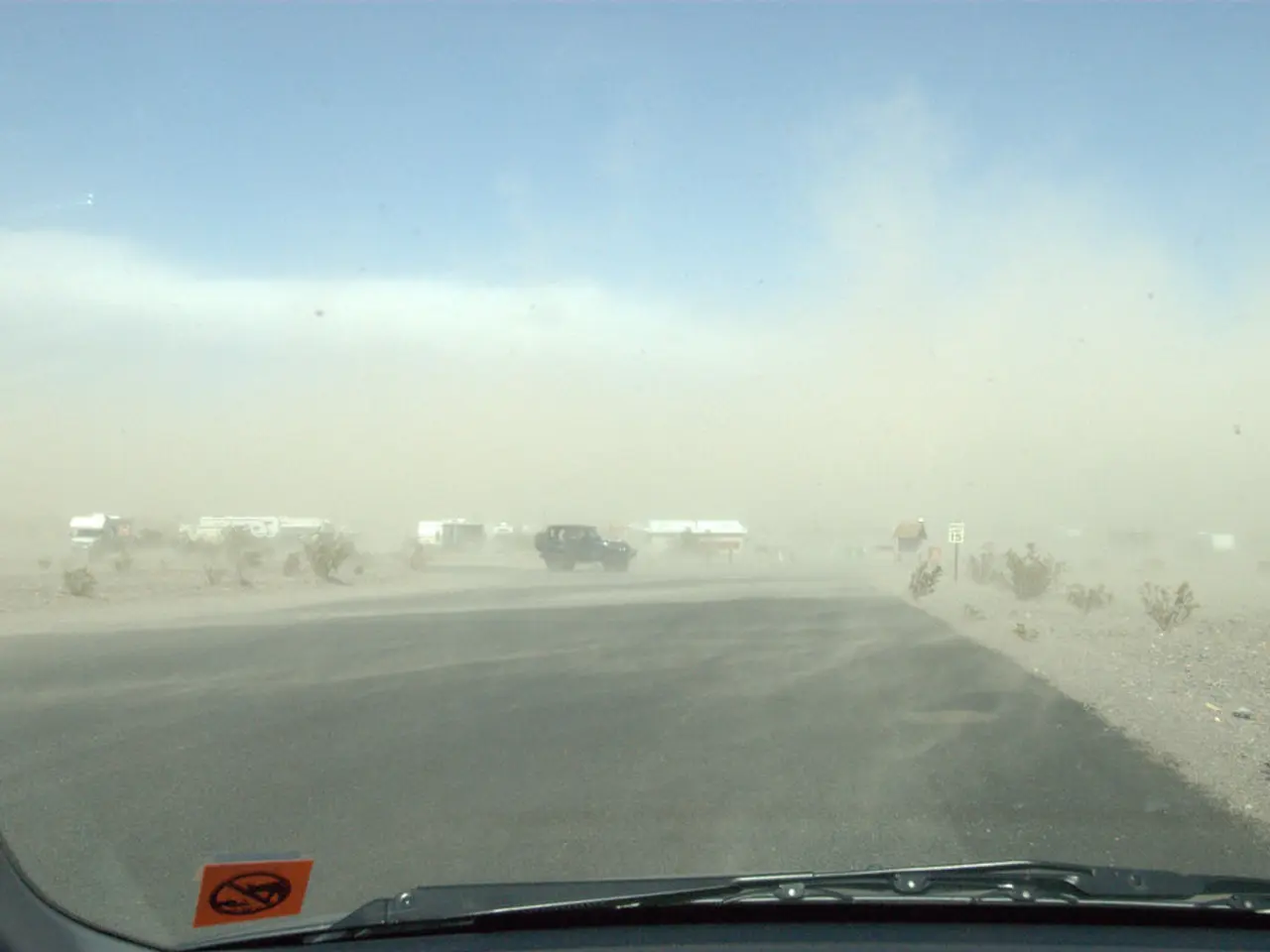Enhanced High-Resolution Radar Boosts Advanced Driver-Assistance Systems' Capabilities
In the rapidly evolving world of automotive technology, a significant breakthrough has been made with the introduction of Digital Array Radar (DAR) technology. This innovative approach to radar systems promises to advance the field of autonomous driving and Advanced Driver-Assistance Systems (ADAS).
DAR technology, which employs digital beamforming techniques with phased array antennas, is set to redefine the performance of high-resolution radar systems in automotive applications. By enabling precise electronic steering and shaping of radar beams without mechanical movement, DAR allows simultaneous targeting of multiple directions and improved spatial resolution.
At the heart of DAR technology lies the integration of multiple small antenna elements. These elements, whose individual signals are digitally controlled in phase and amplitude, work together to form and steer radar beams electronically. This digital beamforming approach enhances resolution and detection capabilities, leading to better target detection, object distinction, and interference mitigation in complex environments.
The collaboration between NXP and Zendar has led to the development of DAR technology for automotive high-resolution radar systems. One of the key components in this partnership is the PurpleBox radar processor reference design, a scalable and efficient solution for distributed radar systems. The PurpleBox is designed to manage and fuse data from multiple radar sensors in a vehicle, enhancing object detection accuracy and reducing false positives and negatives.
The PurpleBox produces a high-density surround point cloud by receiving compressed Range FFT data from the sensors. This early fusion significantly enhances the performance while offering a clear separation between camera and radar perception. The PurpleBox also comes with a comprehensive software development environment and a PCIe interface for mass storage devices or machine-learning accelerators.
DAR technology offers several advantages over traditional radar systems. For instance, it enables high spatial resolution due to finely controlled beam directionality. This, in turn, facilitates multi-target tracking via simultaneous beams or rapid beam switching. Moreover, DAR's robustness to interference and clutter is a result of advanced signal processing, making it an ideal solution for autonomous driving and ADAS.
Another significant advantage of DAR is its reduced mechanical complexity since beam steering is electronic, not mechanical. This reduction in complexity translates to lower costs and increased reliability.
DAR also offers an alternative to traditional radar systems, enabling large virtual apertures using small, low-cost sensors configured in a modular system. This coherent sensor fusion removes hardware constraints on aperture size, achieving excellent angular resolution with significantly lower power consumption than a single large sensor.
The Pluto radar reference design, another product of the NXP-Zendar partnership, allows customers to evaluate corner and front radar applications. The Pluto radar reference design embeds an SAF8544 radar one-chip SoC, TJA1120B 1000Base-T1 Ethernet transceiver, an optimized FS56 system basis chip, and PF51 power-management IC in a small sensor form factor.
In conclusion, the advent of DAR technology is set to revolutionize the automotive radar industry. By enhancing performance, reducing costs, and increasing reliability, DAR promises to make autonomous driving and ADAS more accessible and safer. The collaboration between NXP and Zendar is a significant step towards the realization of this vision.
[1] Automotive Radar Market Size, Share & Trends Analysis Report By Component (Hardware, Software, Services), By Sensor Type (Short-Range Radar, Long-Range Radar, 4D Radar), By Vehicle Type, By Region, And Segment Forecasts, 2021 - 2028
[2] Zendar and NXP Collaborate to Develop Digital Array Radar (DAR) for High-Resolution Radar Systems in Automotive Applications
[3] Zendar and NXP Collaborate to Develop Digital Array Radar (DAR) for High-Resolution Radar Systems in Automotive Applications
[4] Zendar and NXP Collaborate to Develop Digital Array Radar (DAR) for High-Resolution Radar Systems in Automotive Applications
- The collaboration between NXP and Zendar, as seen in the automotive industry, is steering advancements in the manufacturing of Digital Array Radar (DAR) technology for high-resolution radar systems.
- The integration of DAR technology in the finance sector could potentially lead to savings in the transportation industry due to its reduced mechanical complexity, lower costs, and increased reliability.
- As data-and-cloud-computing continues to evolve, DAR technology could play a significant role in the automotive industry, enhancing the performance of autonomous driving and Advanced Driver-Assistance Systems (ADAS) through improved spatial resolution and multi-target tracking.




